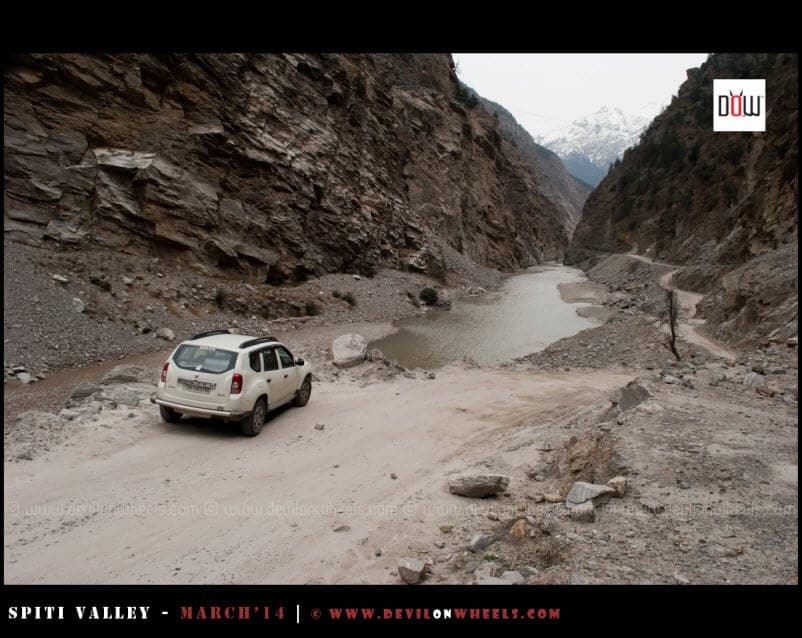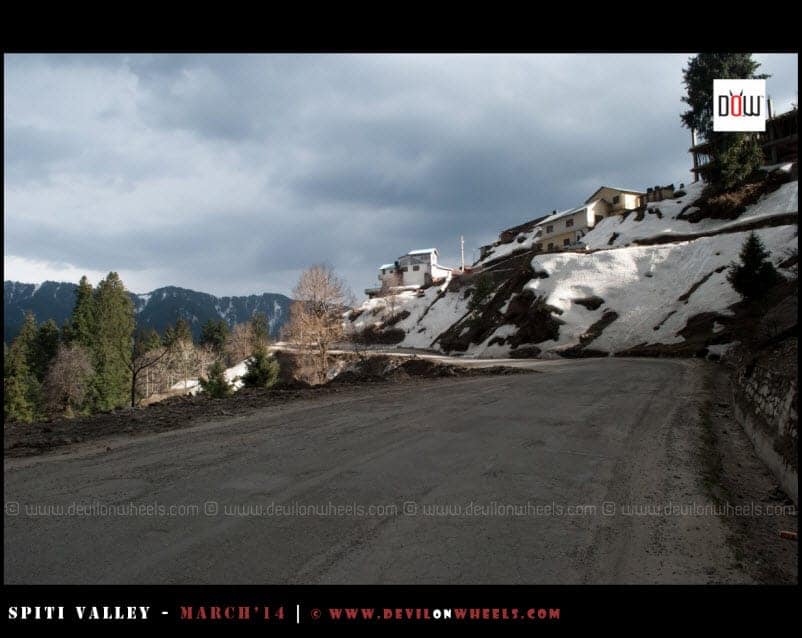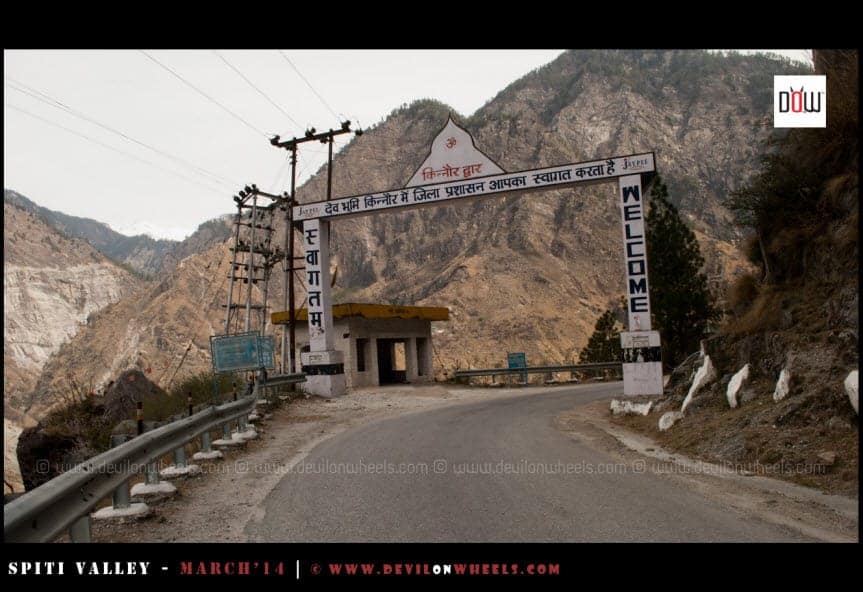Kinnaur Valley is rapidly becoming one of the most popular offbeat destinations in Himachal Pradesh. And why not? Away from the hustle-bustle of touristy towns, Kinnaur Valley offers the majestic views of the snow-capped Himalayas, lush green meadows, and refreshing rivers cutting through the valley.
So, it has all the reasons to be considered as a popular destination among many travelers.
Let's quickly dive into the details:
What is the ideal budget for Kinnaur trip?
People often ask me about what could be the budget for the Kinnaur Valley trip and I feel a dedicated post around this topic will help everyone. If you are looking forward to preparing or analyze the budget or cost of your upcoming Kinnaur Valley trip, then this is the article for you 🙂 …
Frankly speaking, the budget for any trip, including Kinnaur Valley, depends on a lot from person to person. The definition of taste and comfort is a matter of personal preference. Hence, the cost of any trip can be calculated as an estimate on certain assumptions widely applicable.
So, please don’t quote me in case I go wrong in these assumptions about you 😛 … I am pretty sure that this article will help you fairly estimate a budget for Kinnaur Valley trip in Himachal Pradesh.

Why Kinnaur trip budget varies?
Depending upon your choice of comfort, luxury, taste, road conditions and season of travel, you can choose between various stay options available in Kinnaur Valley in villages like Sangla Valley, Chiktul or Kalpa. The variety of stay options may range as Rs 125 stay at some dhabha tent or shack, Rs 300-400 stay at the low-cost guest house or a homestay, Rs 700 – 1500 at medium cost hotels/guest house or Rs 3500+ for hotels that offer much more comfort, convenience, luxury, amenities, and food.
The same thing is applicable for food too. It all depends on what you want to eat on the trip as pizza or dal – rice or roti – dal fry or Maggie or veg food or non-veg food, etc.. Well, with food it also depends upon more importantly where you want to eat and drink.
There are many variables of personal perspective and choices in play while estimating a budget for a trip. Hence, it is not that simple to accurately call out the cost or budget for any trip, including Kinnaur Valley.
However, still, I will try to sketch a basic average budget analysis for a trip to Kinnaur Valley based on the choice of accommodation and food with which the majority of people will be kind of OK.
Cost or Budget for Kinnaur Valley Trip
In order to estimate the budget for Kinnaur Valley trip, we will consider the most common itinerary for Kinnaur Valley trip as a baseline plan. This basic itinerary covers all major tourist destinations of Kinnaur Valley without buffer days but at a relaxed pace. It is followed widely by many travelers, including me, but you can always alter it suit yourself (in case of itinerary questions, leave them here). As a side note, I do not recommend a Kinnaur Valley trip from Delhi with less than 5-6 days on hand.
We will be analyzing the budget or costing for this Kinnaur Valley tour as a part of our exercise. You can roughly estimate yourself that for a similar trip or based on your point of interest, what will be the approximate cost or budget for your own Kinnaur Valley road trip. In case you are following the same or similar plan, then this article is all that you need 🙂 🙂 …
How to go to Kinnaur from Delhi – Baseline Itinerary
Below you can see that this sample Kinnaur Valley itinerary we have taken eight days (without any buffer days). Please consider that while traveling alone, the cost of accommodation and transportation is bound to increase if you are not using public transport.
- Day 1 | Delhi – Shimla / Narkanda
- Day 2 | Shimla / Narkanda – Sarahan
- Day 3 | Sarahan – Tapri – Reckong Peo – Kalpa
- Day 4 | Rest day at Kalpa
- Day 5 | Kalpa – Karcham – Sangla / Rakcham (Baspa Valley)
- Day 6 | Sangla / Rakcham – Chitkul / Sangla / Rakcham
- Day 7 | Chitkul / Sangla / Rakcham – Rampur – Daranghati / Narkanda / Chail
- Day 8 | Daranghati / Narkanda / Chail – Delhi
If you are traveling in an evenly balanced group of 4-5 people, the overall cost is evenly balanced with the comfort of traveling in private taxis or self – drive cars. In this article, I will also assume that you guys are five in number so that the budget can be calculated on a twin/triple sharing basis. I have categorized this article in two major parts to keep it simple.
You should always carry your own water bottle and refill it as many times as you need water. It will not only keep you hydrated always, but you will also help in saving the Himalayas from plastic garbage. Remember, every tiny step counts and you can help save the Himalayas too !! 🙂 🙂
1. Food + Accommodation + Miscellaneous
Let’s assume that you plan to stay in an average budget hotel offering decent comfort and amenities. Also, you are traveling in a group, at least two in number, if not the optimal group size of five people. Then, the average cost per day for food, accommodation, and other misc. things like toll, permit fees, entry fees to monasteries, etc. come about Rs 900 – 1200 per day.
This trip will need eight days at the very least, so roughly you will be spending some Rs 7200 – 9600 per person for food, accommodation, and other miscellaneous expenditures. Again, Rs 900 – 1200 figure could be a low budget for someone and a little high for the others depending upon the choice of stay and food or other activities you plan to do.
Interesting Fact: Did you know there is a difference between Hindustan – Tibet Highway and NH – 22? Read my article to know more at the link Hindustan – Tibet Road or Road to Spiti Valley | An Introduction
An example
An example could be, if you dine at a dhabha shack then the cost of the meal would come out to be around Rs 50 – 70 only per person and the same meal if you take to eat at your hotel then you might pay Rs 150 – Rs 200 per person or maybe more.
Vegetarian or Non-Vegetarian also matters concerning food pricing, so take that too into account. The same logic applies to other activities. Here I have only considered which are unavoidable, such as toll, permit charges, entry fees, snacks, etc. If you are going camping, rafting, mountain biking, shopping, etc.. then that will surely be something additional for you.
Hence, if you are going to the budget hotels having decent comfort, eating decent quality food and including only mandatory miscellaneous charges then you may need to shell out Rs 7200 – 9600 per person for the above Kinnaur Valley itinerary of 8 days.
2. Mode of Transportation
The major cost on any long trip is mainly transportation or the commute. Using public transport for your Kinnaur Valley trip is also a viable and very economical option. However, I will cover the topic of making a trip to Kinnaur Valley on public transport in my next article 🙂
In this article, we can consider a few options like hiring a private taxi, renting a self-drive car or bike, or driving / riding your vehicle to Kinnaur Valley. Let’s look at each one of them below to get an idea of the total budget for Kinnaur Valley trip.
Pro Tip: If you are doing a self drive to Kinnaur Valley in Winters, then make sure to read the article 40 Must Have Things to Carry on a Self Drive Trip to the Himalayas
Self-Drive Own Private Vehicle – Bike or Car
You will be traveling about 1200-1300 KMs for this sample Kinnaur Valley trip. So, if your bike gives a mileage of about 25 KMPL on an average in hills + plains then you are looking for about Rs 3400 – 3700 for fuel roughly. Similarly, you can calculate if you are driving the car. Just keep in mind that in the Himalayas your car will give much lesser mileage than in plains.
So, calculate accordingly and divide them among the people traveling in the car to calculate the per-person cost. Most people prefer to ride to Kinnaur Valley without a pillion on a bike, so cost is calculated singularly.
Finally, taking food + accommodation into account, traveling to Kinnaur by self-drive mode of transport, you are looking at about ((Rs 7200 – 9600) + (Rs 3400 – 3700) = (Rs 10600 – 13300)) as the total budget for Kinnaur Valley trip by your own bike.
In case you are traveling in your own car with 4 people in the car, well you are looking at Rs 2200 approximately per person for the fuel. So, you are looking at about ((Rs 7200 – 9600) + (Rs 2200) = (Rs 9400 – 11800)) as the total budget for Kinnaur Valley trip on your own car.
Self-Drive or Self Ride But Rented Bike or Car
Here, the cost of fuel would be the same as for a self-drive private vehicle calculated above, but you will be adding the cost of bike/car rent as well. Usually, you get a decent bike in good condition at around Rs 1000 – 1200 per day, depending on the make and model of the bike you rent.
So, the cost of rent only comes out to be around Rs 8000 – 9600. Adding the fuel and accommodation cost as calculated in our previous option, the total cost here becomes approximately about Rs 18600 – 22900.
Please note that this cost can go down if you are sharing expenses with a pillion on the bike. Depending on the deal you are getting for self-drive cars from Delhi or Chandigarh for trips to Himachal, you can yourself add up that cost. Some car rentals also provide fuel within the rent too, so do that maths accordingly.
If you are planning to get a rental bike then please check the tips mentioned in the article How to Hire or Rent a Bike or Motorcycle. The topic covers Manali Bike Rentals but most of the tips mentioned in the article are equally applicable for renting bikes anywhere.
Privately Hired Taxi for Kinnaur Valley trip
In this option, I will assume that you have used public transport such as HPTDC or HRTC Volvo to reach Shimla and come back from Shimla. We can take the cost of Volvo to be Rs 1900 per person. Now, you are left with Shimla to Kinnaur Valley to Shimla for about six days.
By the way, if you are interested in making a more adventurous trip, then you can also refer Spiti Valley via Kinnaur | How to Plan Your Journey
The general taxi rates for Kinnaur Valley excursions are about Rs 3200 – 3500 per day. So, for six days of the Kinnaur Valley tour from Shimla, you are looking at Rs 3840 – 4200 per person for taxi considering five people are traveling in your group. So, total commute expenses in this medium come out to be Rs 5740 – 6100 per person.
Again, taking food + accommodation into account, traveling by privately hired taxi for Kinnaur Valley and reaching Kalpa – Sangla in public/shared transport, you are looking at about ((Rs 7200 – 9600) + (Rs 5740 – 6100) = (Rs 12940 – 15700)) as the total budget for Kinnaur Valley trip.
You can get connected directly to some drivers in the Kinnaur Valley or Spiti Valley at the link: List of Taxi Drivers for Kinnaur Valley & Spiti Valley. These drivers can come and pick you up from Shimla / Delhi / Chandigarh, too, of course, with the price of the pickup as well. Otherwise, taxis, in general, are also available on the spot from the Shimla taxi stand.
Shared Taxis or Public Transport or Travel Partners (in a group)
You can check this topic in detail in my article on travel to Kinnaur Valley by public transport. This will be the most economical option of traveling to Kinnaur Valley by buses or shared taxis.
As explained in the article linked under this topic, you can easily make a budget trip to Kinnaur Valley within Rs 5000 using public transport and other shared transport means.
FAQs – Budget for Kinnaur Trip
Let’s look at some of the most commonly asked questions about the budget for Kinnaur Valley trip including traveling by public transport.
Is there any direct Shimla to Kinnaur bus service?
Yes, you can get the direct bus from Shimla to Kinnaur Valley – Reckong Peo every morning. Multiple buses are running between Shimla – Kinnaur daily.
Is there any Delhi to Sangla bus?
There is no direct bus from Delhi to Sangla Valley. However, you can travel to Reckong Peo from Delhi and then take the bus from Reckong Peo to Sangla Valley. The daily bus from Reckong Peo – Sangla Valley – Rakcham is at 4.00 PM.
Is there any Shimla to Sangla bus?
There is no direct HRTC bus between Shimla and Sangla Valley. However, you can travel in the daily buses between Shimla – Reckong Peo and get down at Karcham. From there, you can get shared taxis and other buses running between Reckong Peo and Sangla – Chitkul.
Is there any Shimla to Chitkul bus?
There isn’t any direct bus from Shimla to Chitkul. You can reach Reckong Peo or Kalpa and then travel to Chitkul. There are two buses that run between Reckong Peo and Chitkul every day at 9.30 AM and 12.00 PM.
Is there any Delhi to Chitkul bus?
No direct bus service exists between Delhi and Chitkul. However, Reckong Peo is connected to daily buses from Delhi, and in turn, Chitkul is connected with Reckong Peo by two regular buses every day at 9.30 AM and 12.00 PM.
Conclusion
I hope the above article helps you calculate your budget for the Kinnaur Valley trip. I understand that the above estimation is based upon this popular itinerary for Kinnaur Valley, but I am sure it will prove helpful with your itinerary too.
Have a travel question?? You can subscribe to my YouTube channel and leave a comment to ask your travel questions about traveling to the Himalayas.
I will look forward to hearing about your own perspective/tips budget for Kinnaur Valley trip as well. Kindly, share your valuable thoughts/feedback/inputs, etc. in the comments section below which may help many other fellow travelers reading this article.
In the end, if you know a friend or a family person who is planning a trip to Kinnaur Valley and interested to understand the budget for Kinnaur trip, please feel free to share this article with them as well 🙂






![What are tips for long-distance bike ride in Ladakh or Spiti? [10 Practical Tips]](https://discoverwithdheeraj.com/yt_vid_thumbs/ladakh/86.png)



![What to pack for Ladakh Bike Ride or Spiti Bike Ride? [Clothes, Spares, Gear & Accessories]](https://discoverwithdheeraj.com/yt_vid_thumbs/ladakh/88.png)
2 Comments
Comments section gets closed in 90 days. To ask your travel questions, you can follow my YouTube Channel for a faster reply or for a much slower reply follow me on Instagram. :)
Very useful post,and completely agree with your point on filling water bottles.That reminds me of how our driver used to fill up water bottles from roadside mountain water sources
Yes, it is very true. It is very heartbreaking to see that the educated generation does not much bother while locals do take care of it. Wish some sense prevails in people traveling to the Himalayas.